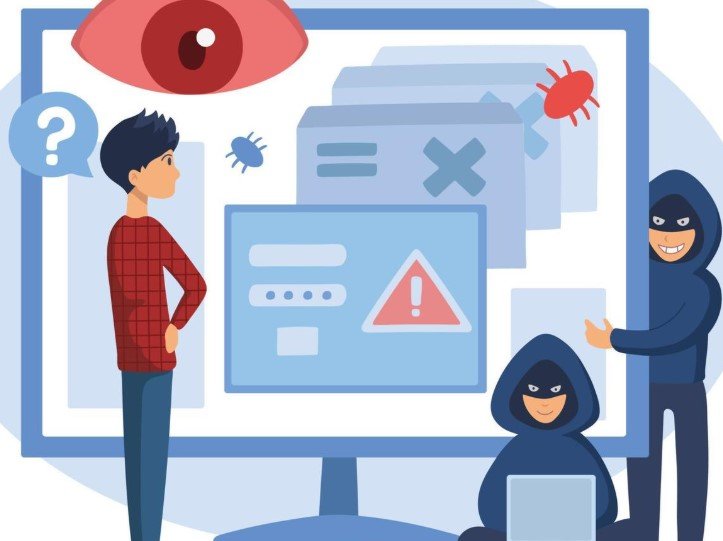Hackers used a hidden flaw in Samsung Galaxy phones to spread spyware called Landfall through simple WhatsApp images. This zero-click attack targeted users in the Middle East for months, stealing data without any user action.
How the Landfall Spyware Attack Worked
Security experts recently uncovered a clever spyware campaign that slipped into Samsung Galaxy phones without warning. The attack started when victims received what looked like normal images on WhatsApp, but these files hid malicious code.
The spyware, named Landfall, took advantage of a zero-day vulnerability known as CVE-2025-21042. This flaw sat in Samsung’s image processing library, letting hackers run code just by sending a specially crafted Digital Negative (DNG) file disguised as a regular photo.
No clicks or downloads were needed. Once the image arrived, the phone processed it automatically, giving attackers full access. Researchers found the campaign active since mid-2024, affecting models like the Galaxy S22, S23, S24, Z Fold 4, and Z Flip 4.

The method was simple yet effective. Attackers sent these files over messaging apps, turning everyday chats into entry points for surveillance.
Targets and Impact in the Middle East
The attacks focused on users in countries such as Turkey, Iran, Iraq, and Morocco. Security teams believe this was a targeted operation, possibly linked to commercial spyware firms selling tools to governments or private groups.
Victims faced serious risks. Landfall could record calls, track locations, capture photos, and access messages and contacts. This level of intrusion allowed spies to monitor people silently for extended periods.
One report noted that the spyware stayed hidden for nearly a year before detection. Many users in the region might still not know if their devices were hit, raising privacy alarms across the area.
Experts point out that such tools often end up in the hands of authoritarian regimes for tracking dissidents or journalists. This case adds to growing concerns about digital surveillance in unstable regions.
Timeline of Discovery and Samsung’s Response
Palo Alto Networks’ Unit 42 team first spotted clues in Google’s VirusTotal database. They analyzed suspicious DNG files uploaded from the Middle East, leading to the full exposure of Landfall.
The vulnerability was reported to Samsung in September 2024. However, the company only released a security patch in April 2025, leaving phones exposed for about seven months.
During this gap, attackers had free rein. Users who updated their devices after the patch are now safe from this specific flaw, but older unpatched phones remain at risk.
This delay highlights challenges in the tech industry, where fixing zero-day bugs can take time due to testing and rollout needs.
Here’s a quick timeline of key events:
- Mid-2024: Spyware campaign begins targeting Samsung devices.
- September 2024: Vulnerability reported to Samsung.
- April 2025: Security patch released to fix CVE-2025-21042.
- November 2025: Full details published by security researchers.
What Landfall Spyware Could Do
Once installed, Landfall turned infected phones into spying machines. It operated in the background, avoiding detection by most antivirus tools.
Key capabilities included:
- Recording audio from the microphone without user knowledge.
- Tracking real-time GPS locations to monitor movements.
- Accessing and stealing photos, messages, and contact lists.
- Intercepting calls and scraping data from apps like WhatsApp.
These features made it a powerful tool for surveillance. Unlike basic malware, Landfall used advanced techniques to hide its command servers, making it hard to trace.
In one analysis, researchers found it could even activate the camera for secret photos. This level of control raises ethical questions about commercial spyware sales.
Links to Broader Espionage Trends
This attack echoes past spyware scandals, like the Pegasus tool from NSO Group, which also used zero-click methods to target phones worldwide. In recent years, similar exploits have hit iPhones and other Android devices.
For instance, a 2024 campaign in Europe used fake apps to spy on activists. The Landfall case shows how threats evolve, now hiding in image files instead of links or downloads.
Industry watchers say the rise of such tools ties to demand from intelligence agencies. With global tensions high, especially in the Middle East, these attacks could increase.
Experts recommend users stay vigilant. Keeping software updated and avoiding unknown senders can help, though zero-click attacks make prevention tough.
Steps Users Can Take to Stay Safe
Samsung users should check for the latest updates right away. Go to settings, then software update, and install any available patches.
Beyond that, consider these protective measures:
| Action | Why It Helps | How to Do It |
|---|---|---|
| Enable auto-updates | Ensures quick fixes for new flaws | Turn on in phone settings |
| Use antivirus apps | Scans for hidden spyware | Download from trusted stores like Google Play |
| Avoid unknown images | Prevents zero-click exploits | Don’t open files from strangers |
| Monitor app permissions | Limits what apps can access | Review in settings regularly |
These steps reduce risks, but no method is foolproof against advanced threats.
Security firms urge phone makers to improve image handling. As attacks grow smarter, users need better built-in defenses.
Why This Matters for Global Phone Security
The Landfall incident exposes weaknesses in even premium devices. It shows how everyday apps like WhatsApp can become weak links in the chain.
With billions using smartphones, such flaws affect everyone. This case could push regulators to demand faster patches from companies like Samsung.
In the end, awareness is key. Share this story with friends who own Galaxy phones, and drop a comment below on your thoughts about mobile security. Have you checked your device for updates lately?
